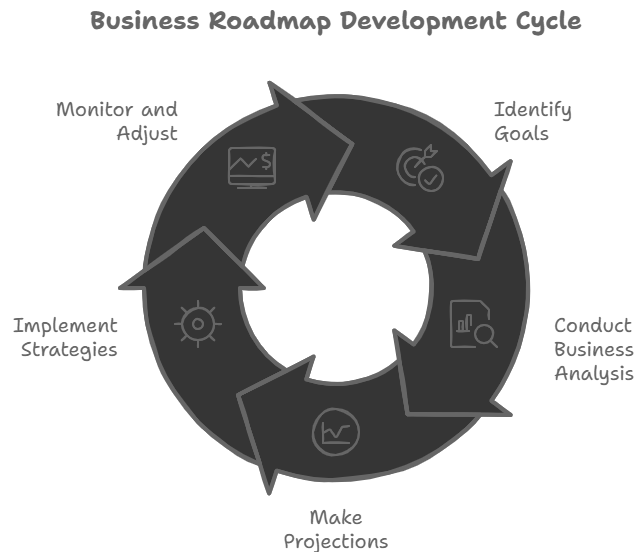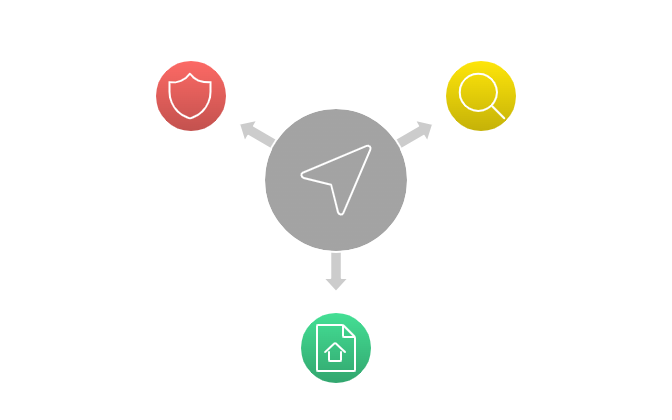Unveiling LRP: Understanding What is Long-Range Planning in Business
Exploring the Fundamentals of Long-Range Planning (LRP)
Long-Range Planning (LRP) is a strategic activity that businesses undertake to establish objectives and craft the tactics to fulfill them over a broad timescale, often spanning three to five years, if not longer. LRP equips businesses with a vision for their preferred future, delineating the long-term trajectory and facilitating anticipation of market trends and potential challenges.
This forward-looking approach is vital for various operational aspects, such as scheduling production in the manufacturing sector. Comprehensive LRP endeavors often involve powerful analytical tools, including, but not limited to, SWOT analysis, to uncover opportunities and mitigate risks within the organizational environment.
Additionally, software solutions like o9’s Integrated Business Planning (IBP) software streamline LRP by improving visibility over extended horizons, enhancing financial outcomes by bolstering operational effectiveness, and diminishing unnecessary waste.
The Intersection of Long-Range and Strategic Planning

Visioning the Future: Crafting Mission and Vision Statements
Developing compelling mission and vision statements is a pivotal element of LRP, defining the organization’s purpose and aspirations. By cementing these underpinning declarations, an entity crystallizes its strategic direction, providing a beacon for all subsequent decision-making processes.
For instance, a consumer electronics company might devise a mission statement centered around innovation and user experience. In contrast, its vision statement may project becoming a dominant player in emerging tech markets. Financially, these clarifications align budgets and expenditures with strategic priorities, promoting a robust and sustainable expansion. Reflecting this in financial planning involves synchronizing capital investment and resource allocation with envisaged pathways, reinforcing the congruity between monetary policy and long-term corporate ambitions.
Designing a Business Roadmap: Steps to Developing Your Long-Range Plan

Identifying Goals and Setting Objectives
The heart of LRP lies in formulating precise goals that align with an organization’s broader mission. Setting these targets is a multi-faceted exercise involving thoroughly understanding the company’s position and an astute assessment of economic indicators and industry trends. For a healthcare provider, such goals might revolve around expanding patient care services or integrating breakthrough technological solutions.
Mapping these objectives into a feasible plan demands meticulously evaluating internal capabilities against market opportunities. Furthermore, projection exercises play a key role as they enable the estimation of future demand scenarios, providing a factual basis for strategic deliverables. Firms often employ financial models to simulate different futures, helping to insulate the business against volatility and grounding the strategy in practical, achievable expectations.
Conducting Comprehensive Business Analysis
An exhaustive analysis forms the foundation of any robust LRP strategy. Distinguishing it from iterative short-term planning, LRP requires a deep dive into both internal and external factors that could influence the organization’s performance over the years ahead. This may encompass evaluating broad economic conditions, legislations, technological advancements, consumer behavior shifts, competitive landscapes, and operational workflows.
Precision engineering firms, for example, might conduct LRP to anticipate material cost fluctuations, regulatory changes, or new entrants that could disrupt existing supply chains. Resources like intheBlk and o9’s IBP provide insightful analytics that inform these extended-period plans. By leveraging dynamic forecasting tools and revising projections with emergent market data, companies adapt more proactively to industry ebbs and flows, integrating budget and forecast data with enterprise software to refine financial expectations.
Projections and Forecasts: Planning for Future Demand
Accurately anticipating future consumption patterns stands central to effective LRP. A pivotal aspect of this is the generation of forecasts that inform product development cycles, inventory management, and capacity planning. For instance, a luxury goods retailer might leverage historical sales data, economic indicators, and consumer trends to predict future product demand.
Progressive LRP incorporates adaptable forecasting methodologies that adjust for new market intelligence, ensuring plans stay responsive to evolving business climates. Moreover, techniques like scenario planning, which envisage multiple potential future states, aid organizations in navigating economic uncertainty. Essentially, tools that offer potent forecasting capabilities, such as o9’s IBP software, can integrate multifaceted data streams, providing a comprehensive view that aids in refining supply chain robustness, minimizing risks, and sharpening competitiveness.
LRP in Action: Implementation Strategies
Translating LRP into practical steps is vital for tangible outcomes. Adeptly laying out these steps involves crafting actionable initiatives that mirror strategic objectives. For businesses in the renewable energy sector, this could include investment timelines for infrastructure development or diversifying into new markets. Integration of advanced planning tools for risk assessment, business model analysis, and operational feasibility studies is crucial.
Financial Planning and Analysis (FP&A) platforms distinctly contribute to translating from plan to action. Within this context, a clear distinction exists between budgeting and forecasting—while budgeting tightly controls immediate fiscal periods, flexible forecasts adapt to immediate dynamics. These components, loaded into accounting systems, streamline monitoring processes and allow for agile responses to business performance against set benchmarks.
Maximizing the Benefits: Tools for Effective Long-Range Planning

Utilizing SWOT for Strategic Advantage
A SWOT analysis is an influential tool in devising effective LRP. It is beneficial to dissect an organization’s relative competencies and identify market gaps potentially conducive to expansion. Augmenting LRP with a SWOT examination provides a four-dimensional business landscape view.
For example, a software development company leveraging SWOT might highlight its efficient, agile development methodologies (strength), recognize an overreliance on a single client (weakness), capitalize on the burgeoning demand in mobile apps (opportunity), and protect against intensifying competition (threat). SWOT prepares businesses to allocate resources prudently and ascend market positions by examining internal and external factors.
Additionally, it aids proactive threat mitigation by anticipating and planning against potential disruptions, such as new regulatory policies or disruptive innovations, ensuring resilience and sustained growth.
Understanding Business Models with In-depth Analysis
LRP pivots around an astute understanding of business models to navigate the future effectively. A comprehensive business model analysis discerns the operability and profitability of an enterprise’s strategic approach in prospective environments. For an e-commerce retailer, this may comprise scrutinizing their distribution networks, customer acquisition strategies, and partnerships.
In-depth analysis affords a close examination of the business model’s various components to identify potential refinement or expansion areas. By meticulously assessing key factors such as revenue streams, cost structure, and value proposition alignment, LRP helps ascertain current-state robustness and future-state adaptability. Tools like SWOT analysis, alongside scenario simulations, extend critical insights that facilitate strategic adjustments.
Evaluating and Mitigating Risks
Risk evaluation and mitigation are indispensable components of a far-reaching LRP. Organizations must hypothesize potential adversities and configure strategies to buffer potential repercussions. For instance, a global logistics company may examine geopolitical tensions that could impede international shipping lanes.
Undertaking such an appraisal allows for formulating countermeasures, such as establishing alternative routes or diversifying vendor bases, thereby sustaining operational continuity amid disruptions. By incorporating risk assessment into their long-term financial planning, businesses steel themselves against future uncertainties and hone their predictive abilities to anticipate industry volatilities, regulatory shifts, and systemic threats before they crystallize into concrete challenges.
Long-Range Planning in Specific Contexts

LRP Considerations in Manufacturing
Manufacturing entities benefit from LRP as it underpins production cycles, demand forecasting, and strategic investments. In this dynamic sector, the longevity of planning assumes pronounced significance given the industry’s capital-intensive nature. Through detailed LRP, manufacturers can align capital outlay with anticipated market expansions, such as a biotech firm earmarking funds for next-generation gene therapies.
This thorough planning enables resource allocation that reflects anticipated growth and emergent sector trends, reinforcing a firm’s position amid competitive landscapes. Capacities such as o9’s IBP software cater to these strategic imperatives by providing integrated planning systems that synthesize disparate data for an end-to-end perspective, amplifying financial foresight and operational scalability.
Navigating Supply Chain with Long-term Goals
In the intricate supply chain management domain, LRP facilitates benchmarking efficiencies and strategic planning of logistic frameworks. Effective LRP capacitates companies to preempt resource shortages, map out logistics for new product introductions, or reconfigure distribution channels due to shifting consumer purchasing patterns.
For instance, a multinational pharmaceutical company might enhance its supply chain flexibility to prepare for patent expirations and the subsequent generic drug competition. Strategic supply chain LRP integrates principles from the broader planning process, leveraging tools such as detailed demand forecasting and robust risk management to sustain current operations and prepare for and profit from future market developments.
Addressing FAQs about Long-Range Planning
Long-Range vs. Short-Term Planning: Key Differences
Long-range planning contrasts with short-term planning in scope and scale. LRP centers on envisioning the future and aligning financial tactics with long-term strategic objectives. It delves into strategic alignment, extending beyond immediate operational concerns to encompass expansive timeframes and profound organizational impacts. Conversely, short-term planning addresses imminent financial needs and adapts swiftly to market fluctuations and operational difficulties.
For example, a telecommunications operator might employ LRP to pivot services towards nascent technologies like 5G while concurrently utilizing short-term planning to address quarterly earnings targets. Both approaches are valuable, with LRP providing a strategic scaffold for enduring growth and short-term planning, offering the flexibility to react adeptly to changing circumstances.
Tackling Challenges in Long-Term Planning
Navigating the complexities of LRP entails playing a long game against uncertainty and change. The challenge lies in crafting plans resilient to immediate disruptions and agile enough to seize evolving opportunities. A broad spectrum of industries, from manufacturing to finance, rely on LRP to forecast market movements, technological evolutions, and consumer tendencies while tempering ambitious growth plans with realistic risk projections.
LRP symbiotically interacts with other financial tools in a company’s arsenal, ensuring synchrony and supporting organizational visions. It deploys projections not as fixed trajectories but as guides that inform and flex with a business’s journey, acknowledging the mutable nature of markets. Tools like o9’s IBP software enhance LRP by delivering scalable, insightful planning functions that marry detailed financial data to strategic organizational aims.

Vizologi is a revolutionary AI-generated business strategy tool that offers its users access to advanced features to create and refine start-up ideas quickly.
It generates limitless business ideas, gains insights on markets and competitors, and automates business plan creation.


